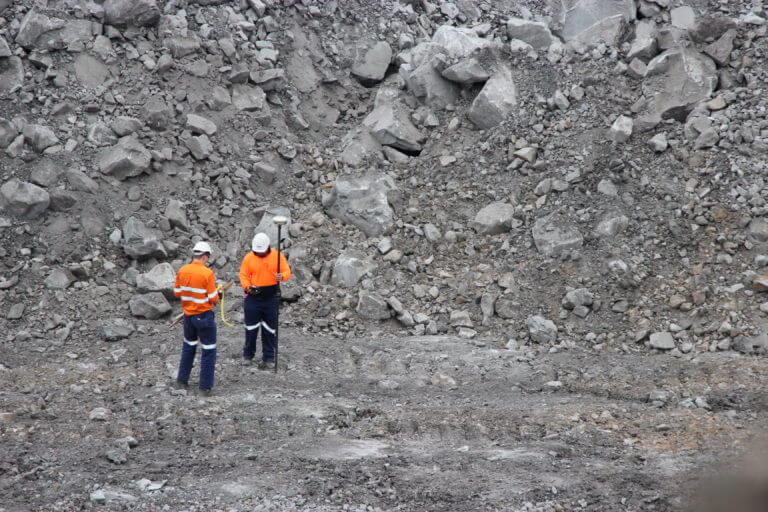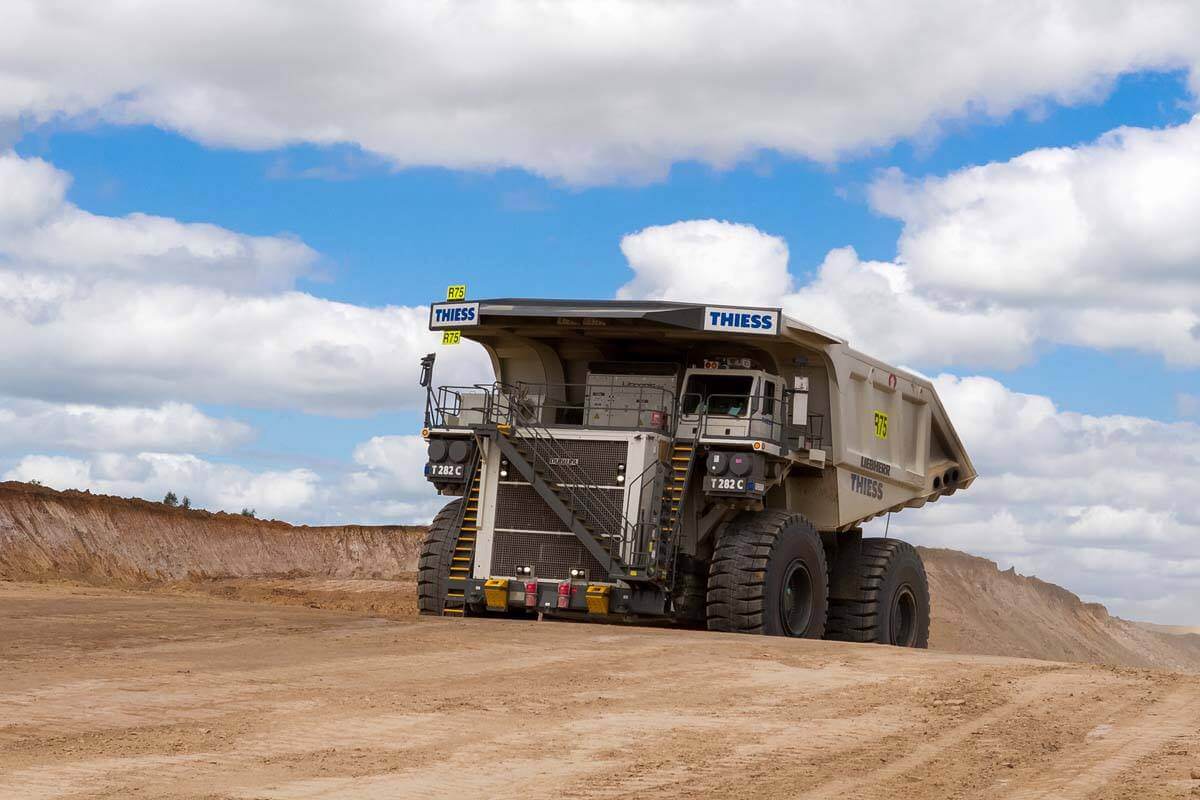Technology has
been at a
record high in
the mining
industry as
everyone is
getting the
hang of how
‘Industry
4.0’ is
revolutionising
the way mining
is done. Not so
long ago not
many would have
envisaged the
current
technological
changes and
advancements in
the mining
industry.
Broadly
speaking the
‘Internet of
Things’ has
contributed to
the various
changes
implemented in
the mining
industry. The
ability to
remotely
monitor
activities and
take readings
in real time
during work
operations
either as a
measure of
safety or just
productivity
checks is key
to enhancing
efficiency of
the mining
operations.
Seamless use of
autonomous
mining vehicles
is amongst the
very advanced
operational
changes which
is taking place
concurrently
with autonomous
vehicle
adoption world
over. The
extent to which
technology is
applicable
should go hand
in hand with
its use for the
betterment of
human life
which is
evident in how
data for coal
dust mine
levels in
Queensland has
been made
publicly
available on
the internet
for everyone to
access it. The
article seeks
to address
technological
advancement in
mining as a
result of the
‘Internet of
Things’
whilst
highlighting
the problems
faced in the
coal mines as a
specific
example and why
transparency is
important for
achieving the
best out of
making data
available for
public
deliberation
and reference.
Digital
Mining
Monitoring
and prediction
of hazards in
mines are
essential for
improving
miners’
safety through
minimising
accidents and
productivity of
coal or
minerals which
can be achieved
through digital
mines based on
the ‘Internet
of Things’. A
digital mine is
the simulated
version of a
physical mine
which includes
mine-inclusive
machinery and
equipment as
well as the
production
processes. The
network
consists of
models, methods
and tools
backing the
entire
production
operation. The
benefits of a
digital mine
include
continuous and
consistent data
management,
production
management and
consequent
introduction of
engineering
methods and
tools. The
multifaceted
mining
operation is
catered for
including
roadways, mine
mechanics,
electrical
facilities,
mine
ventilation,
safety and
environmental
conditions.
Digitizing
mines creates a
collaborative
decision
environment
which quickly
clears any
bottlenecks
across the
value chain in
addition to
accountability
to the key
performance
areas of the
mining
operations.
Time is of the
essence in
mining
operations
hence
collection of
data in real
time and how
quick it feeds
to
rectification
channels can
increase the
predictive
tools to
automated and
imminent
action.
Taking
a good look at
the control and
management
offered by a
digital mine
enables
targeting
specific mining
operations but
in order to
further
understand the
concept it is
imperative to
highlight the
elements and
components
controlled by
the digital
mine and these
include:
- Underground mine equipment in its entirety and proximity detection systems
- Mine face and strata visualization
- Electrical network, water drainage and air pressure infrastructure monitoring
- Conveyors, belts, bunker and transportation equipment
- Standstill monitoring for machinery and transportation equipment
- Mapping mining assets positions against geographical map for observation, supply and maintenance using wireless networks in underground mines
- Miners wearable device technology and transportation tracking
- Ventilation and production
- Video integration and operator support through event-driven video control
- Mine hazards and safety
Capturing
real time –
real location
data
Applications
of wearable
devices to the
mining industry
is another
example of the
use of
technology for
gathering data
in the mining
industry.
Firstly, the
SmartGlass
developed in
Canada is
equipped with
special
features to
improve the
efficiency and
safety of
operations in
hard rock
mining. The
smart eyewear
includes time
management for
controlling
mining
equipment, free
access to the
most commonly
used
information and
production
process control
and monitoring.
Secondly,
Deloitte
Wearables also
from Canada
focused on a
wearable smart
helmet which
containers
sensors that
detect levels
of hazardous
gases in the
air, radiation
sensor,
temperature and
humidity
sensors.
Remotely, the
action of mine
workers can be
monitored via
radio frequency
identification
tags for the
administration
of information
about the
locations of
workers which
helps with
better
management.
Finally, in
South Africa
Expert Mining
Solutions
deployed the
Life wearable
device which
incorporates
sensors and
actuators to
acquire brain
activities of
equipment
drivers and
monitor fatigue
at coal mines.
Given how these
technologies
have really
brought a
different
dynamic to real
time monitoring
of the mining
environment and
the worker,
opportunity
still lies with
ability to
detect coal
dust allowable
and respirable
limits and
notify
immediately
before
overexposure
takes
place.

Coal
mining as an
example
The
most pertinent
example is coal
mining hazards
and safety
measures are
very important
to the
regulation of
acceptable and
allowable
limits of
exposure of
coal dust to
coal mine
workers. Our
discussion will
focus on the
coal mining
hazards and
safety measures
in Queensland,
Australia.
Boasting a rich
history in coal
mining with
current mines
and reserves
still to be
utilised the
mining of coal
will continue
for centuries
to come. The
need for energy
in the form of
coal also
coincides with
environmental
and health
problems
attributed to
coal combustion
which relies
strongly on
making
information
about coal
available.
Comprehensive
databases
containing
appropriate
coal quality
and emissions
of coal for all
registered coal
mines can be
useful for
public
consumption,
coal mine
workers and
other
stakeholders
for sound
decision making
with regards to
coal use.
Chemically,
coal databases
should include
information
about proximate
and ultimate
analyses,
sulfur form
information,
major and minor
trace element
concentrations,
modes of
occurrence
information,
cleanability
and textural
relationships,
mineralogy,
organic
chemistry,
petrography and
leachability.
Making
a
difference
Following
the resurgence
of Black Lung
in Australia in
the last 5
years it has
been more
important than
ever to put
systems in
place for
stringent
checks and
balances to
eliminate the
scourge of coal
miner’s
pneumoconiosis.
The Department
of Natural
Resources and
Mines made the
dust monitoring
results from
Queensland
underground
coal mines
available
online for the
first time in
2017 and have
been published
quarterly since
to foster
transparency
and as part of
implementing
demands tabled
for improving
screening
systems for
coal workers.
Perhaps now
with Industry
4.0 upon us,
the measurement
of coal dust
exposure can
even be smarter
and implement
technologies
that can record
exposure
results in real
time which can
collate and
feed into the
Depart of
Natural
Resources and
Mines database
as a mandatory
rule. Important
would be to
compare
submitted real
time data to
data submitted
by the
different
mining
companies. The
role of the
“Internet of
Things” is
pivotal in
connecting the
full scale
mining
operations and
monitoring
different
aspects of the
digital mine.
This is
important in
detecting
hazards before
an accident
happens, but
most
importantly if
coal dust
limits can be
detected in
real time the
chances of
overexposure to
coal dust
particles
resulting in
acute,
accelerated and
chronic coal
dust related
pulmonary
conditions will
be greatly
minimised –
particularly if
coupled with
dust mitigation
technologies.
REFERENCES
- Coal mine dust levels now online retrieved on 05/09/20
- Finkelman, R.B., and Gross, P.M.K. 1999. The types of data needed for assessing the environmental and human health impacts of coal. International Journal of Coal Geology. 40. 91-101.
- Chaulya, S.K., and Prasad, G.M. 2016. Formation of Digital Mine Using the Internet of Things. Scanning and Monitoring Technologies for Mines and Hazardous Areas. Elsevier Ltd.
- DuCarme, J. 2019. Developing effective proximity detection systems for underground coal mines. Advances in Productive, Safe, and Responsible Coal Mining. Elsevier Ltd.
- Mardonova, M., and Choi, Y. 2018. Review of Wearable Device Technology and Its Applications to the Mining Industry. Energies. 11:547. 1-14.
- Pirjo, S., and Marko, P. 2016. Wireless networks in underground mines. Industrial Wireless Sensor Networks. Elsevier Ltd.
